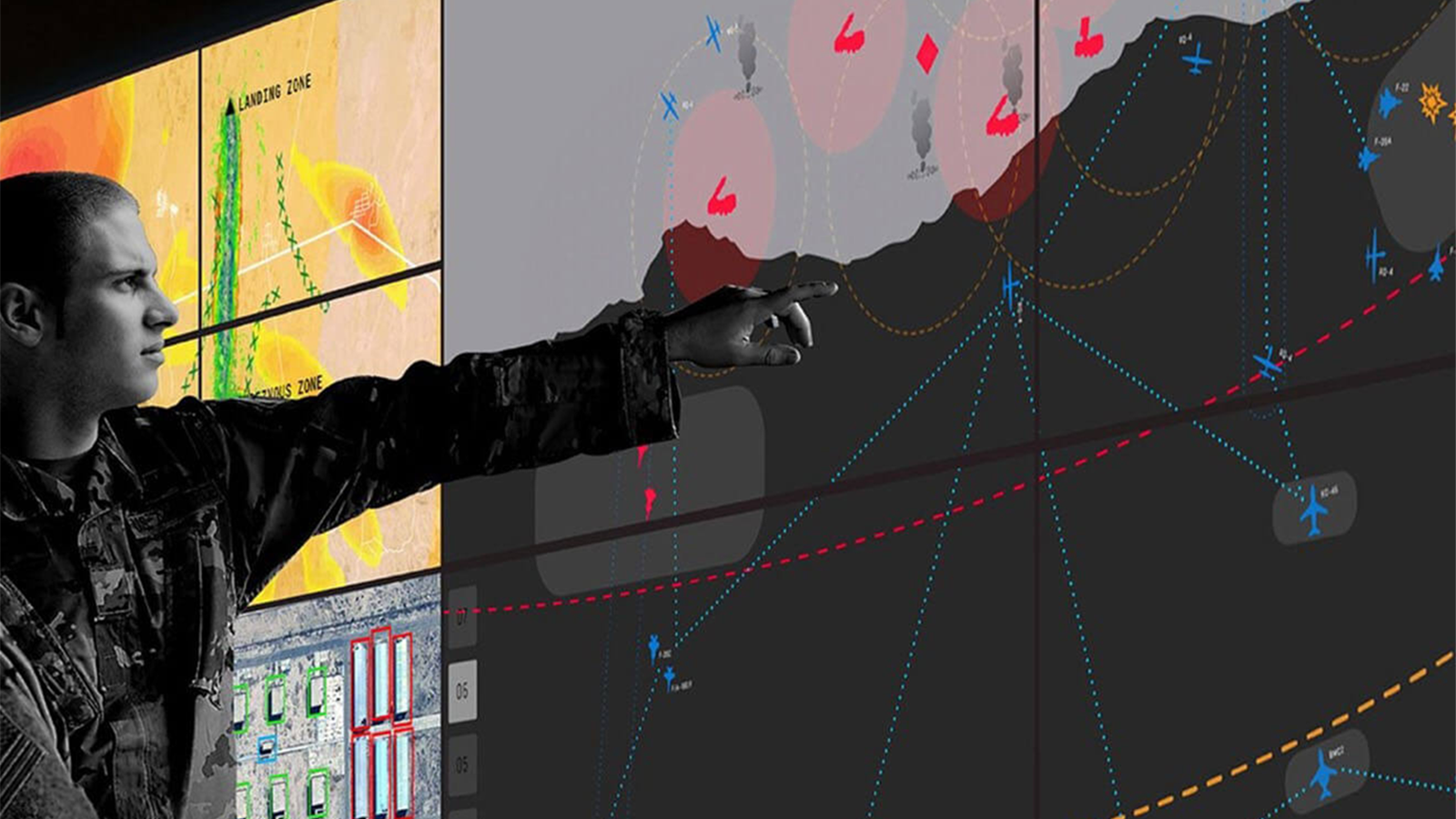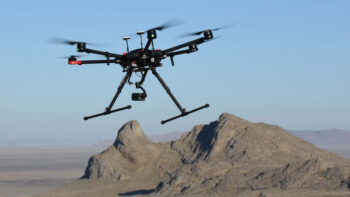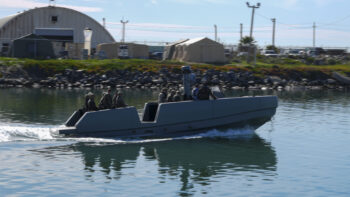
A representation of JADC2 information screen. (Graphic via Raytheon)
WASHINGTON — The Defense Department must ensure that innovation survives military’s notoriously cumbersome acquisition process if it wants its ambitious Joint All Domain Command and Control (JADC2) effort to actually work, according to a new brief from the Center for Strategic and International Studies (CSIS).
“Some of the technologies enabling the JADC2 concept — those closest to the goal of more rapid closing of kill chains — will have no general commercial equivalent,” the brief says. “The DoD will need to drive innovation for these as it has for many systems in the past. In others, such as data storage and data processing, the DoD will have to follow the lead of — and benefit from investments by — the commercial market to capture innovations at the speed of operation relevance.”
According to CSIS’s analysis in the brief, there has been a steady decline in the total number of vendors supplying electronics, communications technologies and sensors to the DoD in the last 15 years. Bringing in technologies from outside of DoD’s traditional vendor system will be a key component in fostering JADC2 technical innovation, but that’s something DoD has traditionally struggled with, according to the brief. JADC2 refers to the Pentagons’ sprawling, often nebulous initiative to connect “sensors to shooters,” meaning to make sense of a deluge of a battlefield data in real time and act on it rapidly.
DoD “has had a long history of struggling to capture commercial innovations,” says the brief [PDF], published Tuesday. One of the challenges stems from Silicon Valley’s products not being tailored for combat environments, and what makes JADC2 “an especially difficult problem” is that it’s not one “single, steady-state” capability being fielded.
According to CSIS, when thinking about JADC2 there shouldn’t be a defined “endpoint or suite of capabilities with known end states but rather as several steps on the path toward greater interoperability across all domains in order to achieve joint effects.” That may seem contradictory to how policymakers have in the past characterized the effort.
RELATED: With A New Office, Air Force Revamps ABMS Acquisition… Again
In its mark of the fiscal 2023 defense authorization bill, the House Armed Services Committee’s cyber, innovative technologies and information systems (CITI) subcommittee said it wanted an inventory of all JADC2-related development efforts, with descriptions of performance objects, costs and schedules and a list of potential JADC2 capability gaps.
Pushing JADC2 into that model is a mistake because many of the technologies under JADC2 are constantly evolving on a rapid commercial timeline, the brief says.
“That language suggests that the capabilities are finite and that the JADC2 acquisition effort has a notional end date when all of those discrete enablers are acquired and integrated,” according to the brief. “This is how the military traditionally understands and designs acquisition programs, with program managers evaluated on cost, schedule, and performance.”
Likewise, in August, the head of the JADC2 Cross Functional Team (CFT) said she wanted people to start thinking of the effort as an “ecosystem” and that all of the disparate efforts from the services are aligned. The Army has its annual Project Convergence experiments, while the Air Force has its Advanced Battle Management System, and the Navy has its secretive Project Overmatch.
According to the brief, when it comes to the JADC2 CFT, “or whatever ultimate central management function is instantiated,” it “needs to go beyond the management of ‘the plans of actions, milestones, and resourcing requirements’ toward the development of a common understanding and management of the architecture of the innovation ecosystem to achieve the Joint Force C2 [command and control] vision.”
Officials from the Army and Air Force have in the past questioned the JADC2 CFT for not bringing in the level of interoperability DoD needs and Deputy Secretary of Defense Kathleen Hicks has made it clear she wants additional high-level oversight on the effort.
According to CSIS, “centralized JADC2 guidance will be most useful to beat the drum for acquisition innovation, to drive interoperability among service programs and manage the seams between joint and service capabilities… and to serve as an entry point to C2 issues for partners and allies and to address issues of international data sharing.”
But, it warned, the Pentagon shouldn’t set its expectations for real-world JADC2 too high.
“The DoD will likely never be able to meet the goal of connecting every sensor with every effector, especially on a battlefield becoming increasingly sensor saturated and complex,” according to the brief. “That does not mean the DoD should simply surrender. Instead, the DoD should develop meaningful metrics and goals for improvement towards the goal of the technology.”





















